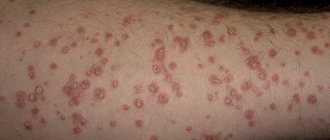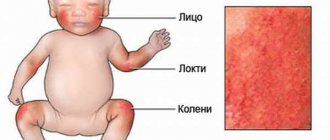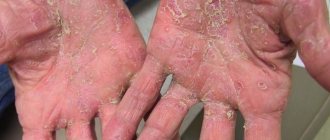Melanoma is a type of cancer that starts in the skin cells that produce the pigment melanin. At the initial stage of melanoma development, the cancerous tumor usually appears as a dark-colored mole. However, melanoma can appear not only on the skin, but also in other tissues and organs, including the eyes and intestines.
- How is the stage of melanoma determined?
- Factors influencing survival
- The story of Christina from St. Petersburg, a patient at the Ichilov Cancer Center:
- Comment from a doctor at the oncology center:
- Cost of melanoma treatment in Israel
- How to contact us
How is the stage of melanoma determined?
Based on the stage, one can judge the main characteristics of the disease in a particular patient. First of all, the stage indicates the extent of the spread of the pathology. For example, to detect stage I melanoma, a doctor only needs to perform a routine medical examination, but to determine the severity of the disease it is necessary to use special technologies. Most often, patients are prescribed a PET scan and sentinel lymph node biopsy.
There are 5 stages of melanocytic skin cancer. The first stage is usually called stage zero, or melanoma in situ. The last stage is the fourth. As the disease progresses, patient survival rates decrease. It is important to understand that statistics provide only an approximate picture. Each melanoma patient is unique, and the individual prognosis always depends on many different factors.
- Stage 0
Stage zero melanoma is also called melanoma in situ. This means that your body contains several abnormal melanocytes. Melanocytes are cells that produce melanin, the substance that gives the skin its natural shade.
At this stage, melanocytes can become cancerous, but for now they are simply abnormal cells in the top layer of skin. Melanoma in situ looks like a small mole. Even if it seems to you that nothing bad is happening, any new or suspicious formations on the skin should be shown to a dermatologist.
- Stage 1
At stage 1A, the thickness of the tumor does not exceed 1 mm. There is no ulceration. This means that the tumor has not penetrated the skin. Stage 1B indicates one of 2 scenarios:
- melanoma, not exceeding 1 mm in size, began to penetrate the skin;
- melanoma has grown to a size of 1-2 mm, but has not penetrated into the lower layers of the skin.
The 5-year survival rate for stage 1A melanoma is 97%, and for stage 1B melanoma it is 92%. The 10-year survival rate is 95% for stage 1A melanoma and 86% for stage 1B melanoma.
- Stage 2
The second stage of melanoma means that the thickness of the tumor has exceeded 2 mm. At this stage, doctors examine the tumor to determine how deeply it has penetrated the layers of the skin. The usual treatment strategy is surgery to remove the malignant tumor. To assess how widespread the cancer is, doctors order a biopsy of the sentinel lymph node.
The 5-year survival rate for stage 2A melanoma is 81%, and for stage 2B melanoma it is 70%. The 10-year survival rate of patients with stage 2A melanoma reaches 67%, with stage 2B melanoma – 57%.
- Stage 3
This stage includes tumors of any size and shape. Stage 3 means that the skin cancer has spread to the lymphatic system. Doctors usually prescribe surgery to remove the cancerous tissue and lymph nodes. Standard treatments for stage 3 melanoma also include radiation therapy and the use of powerful chemotherapy drugs.
The 5-year survival rate of patients with stage 3 melanocytic skin cancer varies from 40 to 78%. The 10-year survival rate ranges from 24 to 68%.
- Stage 4
Stage four melanoma means the cancer has spread to internal organs, such as the lungs, brain, and other structures. The disease also often affects lymph nodes located at a considerable distance from the primary tumor. Stage 4 melanoma is difficult to treat using conventional methods.
The 5-year survival rate reaches only 15-20%. The 10-year survival rate for stage IV melanoma is 10-15%.
Check the price with a specialist
Skin melanoma symptoms
If the signs are not yet a diagnosis, then obvious symptoms of the development of skin melanoma require prompt medical intervention. Having noticed the symptoms of such a disease, it is important to take timely measures without attributing what is happening to temporary problems in the body.
Symptoms indicate the transition of altered nevi to the status of malignant tumors if the following phenomena are observed:
- moles or birthmarks become denser, change shape and swell;
- there is a stable growth of neoplasms under the skin;
- the color (pigmentation) of the growing nevus intensifies to dark bloody, or vice versa - the pigment disappears and turns pale;
- crusts and cracks appear, from which blood bleeds, ulcers develop;
- there is constant discomfort, burning, itching;
- lymph nodes grow and clusters of nodules appear;
- the skin turns red and loses pigmentation.
Dangerous symptoms require surgical or medical intervention.
Factors influencing survival
The 5-year and 10-year survival rates for different stages of melanoma are based on data obtained from patients who survived at least 5 or 10 years from the date of diagnosis.
The following factors influence survival:
- new developments in cancer treatment;
- the body's response to treatment;
- age of the patient (regardless of the stage of the disease, older patients live shorter than others).
Preventive measures
In its early stages, melanoma is highly treatable. However, the success of therapy primarily depends on the timely detection and treatment of cancer.
If you notice a new mole or suspicious spot on your skin, you need to go to a dermatologist for examination as soon as possible. Timely diagnosis is especially important if your immune system is weakened by HIV or another infectious disease.
Consistent use of sunscreen is one of the best ways to prevent skin cancer. It is also advisable to wear clothing that protects from solar radiation, for example, T-shirts made of special material that does not transmit ultraviolet rays.
You should definitely familiarize yourself with the classic method for diagnosing melanomas called “ABCDE“. It will help you determine how dangerous a particular mole may be.
Get exact price
Treatment at the Ikhilov Cancer Center without leaving your home.
How clinic specialists treat patients during coronavirus.
Find out details
Treat yourself at the Ikhilov Oncology Center without leaving your home.
How clinicians care for patients during the coronavirus crisis.
Find out the details
Metastases and life expectancy
Characteristic metastasis begins already at the third stage. What makes the situation worse is that at this stage, cancer cells spread throughout the body, affecting new areas each time. The fight against the spread of metastases becomes much more difficult. But today there are several ways to prevent the spread of the disease:
- Surgical intervention is performed even at the fourth stage, but if there is a risk of complications due to metastases and lymph nodes, which threatens life, or there is severe pain. Radiation therapy is also applicable for brain metastases, and this depends on how enlarged the tumors are and their number.
- Chemotherapy sometimes helps those patients diagnosed with stage four. After treatment, a reduction in metastases is observed, but after metastasis, unfortunately, it intensifies.
- Biochemotherapy – includes immunotherapy and chemotherapy in combination with drugs such as Interferon and Interleukin. This therapeutic effect helps to improve the course of the disease, but has no effect on life expectancy.
- Immunotherapy – helps when melanoma has spread. This technique uses the latest drugs that are designed to block the cellular pathway and the immune system tries to rid the body of tumor cells. Some drugs can even stop further growth of metastases. After treatment, it was found that survival rate doubled.
Similar article - Ant bullet bite consequences
It is very important not to waste time and look for new drugs and treatment methods, which must be agreed upon with the supervising doctor. At the fourth stage of melanoma, life prognosis is influenced by the following factors:
- gender, since women survive better when their tumors are localized on the extremities, which indicates a benign course of the disease;
- localization - is favorable if the upper limb is affected, but if the upper back, neck or occipital region is affected, the situation is aggravated;
- thickness of the formation, when the highest survival rate is recorded at values not exceeding seventy-five hundredths of a millimeter;
- the formation of ulceration - significantly reduces the survival rate;
- pigmentation, when non-pigmented melanoma has a survival rate of fifty-four percent, and pigmented melanoma is seventy-three percent;
- direction of growth, where the worst prognosis is recorded for melanomas with vertical growth, in contrast to melanomas in the horizontal plane.
You should know that even with the fourth stage of melanoma development, many patients have a good response to treatment, and they can live for many more years.
The story of Christina from St. Petersburg, a patient at the Ichilov Cancer Center:
— While vacationing in Israel, I discovered a lump on the top of my foot. Then I didn’t even think that it could turn out to be cancerous. I decided that the bump looked unsightly and went to a dermatologist to have it removed. The doctor removed the lump and sent it for examination. It turned out that I had melanoma. I decided to play it safe and here, in Israel, I turned for advice to the Ichilov Oncology Center.
Before the diagnosis, of course, I knew that anyone can get cancer, but I didn’t worry about it. I went to the beach with my friends. I often neglected sunscreen because I wanted to have a beautiful tan. I like it when my skin feels like it's been kissed by the sun. I visited solariums and didn’t even think about the danger.
When I found out that I had melanoma, I decided: okay, it’s just a spot on the skin. It will be removed and everything will be fine. As it turns out, I am now in a high-risk group. Since I already had melanoma, the tumor may appear again.
I didn’t understand how serious it was until I talked to an oncodermatologist. Only then did I realize that this disease greatly affects the patient’s life. And I’m glad that I contacted the cancer center on time.
Signs of the disease
Symptoms of melanoma include the following:
- absence of skin grooves on the mole. The surface becomes smooth, as if glossy, mirror-like;
- growth of the mole both in thickness and width;
- peeling, surface dryness, cracking;
- bleeding, the appearance of ulcers of various sizes;
- inflammation - not only in the area of the mole itself, but also around it;
- various unpleasant sensations in the area of formations: burning, tingling, itching, etc.;
- compactions under the skin, nodules.
It is not necessary for more than one symptom to appear. The first 1-2 symptoms of melanoma are enough to go to the doctor and undergo a thorough examination.
Comment from a doctor at the oncology center:
— Melanoma affects even young people. The lighter your eyes and skin, the more easily you burn in the sun, the more difficult it is for you to tan, the higher your risk of developing melanocytic skin cancer. Yet melanomas occur even in people with dark skin color.
On average, 1 in 5 people will be diagnosed with melanoma during their lifetime. Skin cancer cannot be guaranteed to be avoided, but the likelihood of developing a tumor can be reduced. Wear thick clothes with sleeves. Try not to walk outside in the middle of the day, during peak solar activity. Use sunscreen regularly. All of this will help you reduce your risk of skin cancer.
Women between the ages of 20 and 30 often come to us, so Christina’s case is not an exception to the rule. I told this girl the following: if you have already had melanoma, then your risk of developing a second such tumor throughout your life is 10-20%. For this reason, every 4-6 months you need to undergo a preventive examination by a dermatologist. If a second melanoma does appear, it must be detected as early as possible.
Get a treatment program for free
Early detection of melanoma is the key to reducing mortality rates. Melanomas are perhaps the most obvious cancers. If detected early and treated immediately, they pose no real threat. But once melanoma metastasizes, no therapy is effective.
If melanoma is detected early, it can be cured with 100% probability. That's why you need to go to a dermatologist as soon as you notice a suspicious growth on the skin.
Cost of melanoma treatment in Israel
Below is a table in which you will find prices for some types of diagnosis and treatment of melanoma at the Ikhilov Cancer Center.
| Type of diagnosis or treatment | Price |
| Appointment and consultation with an oncodermatologist | $587 |
| Detailed blood test | $268 |
| Biopsy | $684 |
| BRAF mutation detection | $1282 |
| PET-CT | $1480 |
| Removal of stage 1 melanoma | $5486 |
Review of breast cancer treatment in Israel
In September 2020, I felt a lump in my left breast. I'm not an alarmist, but I knew what this could mean. I had an appointment in a month with my OB/GYN, so at first I thought I'd wait and talk to my doctor about it.
I had a mammogram just six months ago. But after studying information on the Internet, I realized that to be safe, I need to meet with a doctor earlier.
Read more…
Review of pancreatic cancer treatment in Israel
Five years before I was diagnosed, I was working out four times a week and was in great shape. Friends noticed that I had lost a lot of weight , but I just thought it was due to my active lifestyle. During this time I constantly had stomach problems. My doctors recommended over-the-counter medications.
I also had constant diarrhea for a month. My doctors didn't find anything wrong.
Read more…
Feedback on treatment of cervical cancer in Israel
At the beginning of 2020, I took my doctor's advice and had a colonoscopy. I've never done this before. My doctor showed my husband and me a picture of my colon. Two polyps were visible on the image. The doctor pointed to the first spot on my colon, reassuring us there was nothing to worry about. He then pointed to another area and told us that he thought it was cancerous. During the procedure, he took a biopsy and the tissue was analyzed.
Read more…
Review of prostate cancer treatment in Israel
In 2011 I started having acid reflux. It was uncomfortable and worrying, so I went to our family doctor for a check-up. During the visit, he asked me when was the last time I had my canine antigen tested, a routine test that many men do to check for possible signs of prostate cancer. It had been about three years since I had this test done, so he added it to my appointment that day.
Read more…
Review of brain cancer treatment in Israel
My story begins with numbness. One day in 2012, three fingers on my left hand suddenly lost feeling. I immediately made an appointment with the doctor. By the time the doctor was able to see me, everything had already passed, but my wife convinced me to go for a consultation. I had an x-ray to see if there was any evidence of damage to my spine, possibly from driving the truck. When some...
Read more…
Review of ovarian cancer treatment in Israel
In the winter of 2010, when I was 30 years old, I felt a sudden pain in my right side. The pain was sharp and began without warning. I immediately went to the nearest hospital.
The doctor received the results of my blood test and he saw that my white blood cell count was extremely elevated . The doctor and others who saw these results were alarmed and asked the on-call gynecologist to come see me right away.
Read more…
Review of lung cancer treatment in Israel
I struggled with an intermittent cough for about three years . It appeared in winter and disappeared by spring, and then I forgot about it. But in the fall of 2014 this happened earlier. In October, my wife called a local pulmonologist. We were scheduled for our first meeting in three months.
... At the Ichilov Cancer Center we met with a thoracic surgeon. We decided to completely remove the nodule. Read more…
Diagnostics
Assessing the advanced stage of the disease is of great importance for establishing clinical prognosis and prescribing optimal treatment. The terminal stage requires a full examination every 3 months. In the general diagnosis of melanoma, the following 4 types of diagnostics are used, the first three of which only help to make a diagnosis, and the last one already reveals the terminal stage.
Dermatological examination
. The dermatologist asks questions about the time of appearance of the tumor, factors that could provoke the disease, as well as genetic predisposition to melanoma. He also evaluates the size, clarity of the edges and color of the suspicious spot, and pays attention to blood discharge and peeling.
Hardware examination of the skin
. This type includes basic and digital dermoscopy. In some cases, it can be done at a doctor's appointment along with a visual examination. Dermatoscopy allows you to examine spots at multiple magnification without surgical intervention. The digital type of procedure serves the same purpose, but uses a special camera for magnification.
Blood analysis.
It can confirm or deny the very presence of cancer. In such cases, they are directed to determine the level of S100, take an extended blood test and check the amount of LDH, which indicates the process of destruction in tissues and organs.
Histological tests.
This involves microscopic examination of tissues. An organic fragment is obtained only surgically during a biopsy or surgery. During a biopsy, a piece of the tumor or nearby lymph nodes is removed. In some cases, it is impossible to examine a tumor because the patient had it removed (for example, in a beauty salon, without suspecting its malignancy).
General examination
. After identifying the terminal stage, other organs are examined for metastases. MRI, CT, and x-ray diagnostic methods are used. Radioisotope research is also used, during which a special substance is introduced into the body, which can be seen on a medical image. Its accumulations in daughter tumors help determine their number and size.











